Figure shows an arragement of four identical rectangular plates A, B, C and D each of area S.Thickness of plates is negligible. Then :

Potential difference between plates A and B is independent of Q1
Potential difference between plates C and D is independent of Q1
Potential difference between plates A and B is independent of Q2
Potential difference between plates C and D is indpendent of Q2
The correct Answer is:A, B
Similar Questions
Figure shows an arrangement of four identical rectangular plates A,B,C, and D each of area S. Find the charges appearing on each face (from left to right) of the plates. Ignore the separation between the plates in comparison to the plate dimensions.
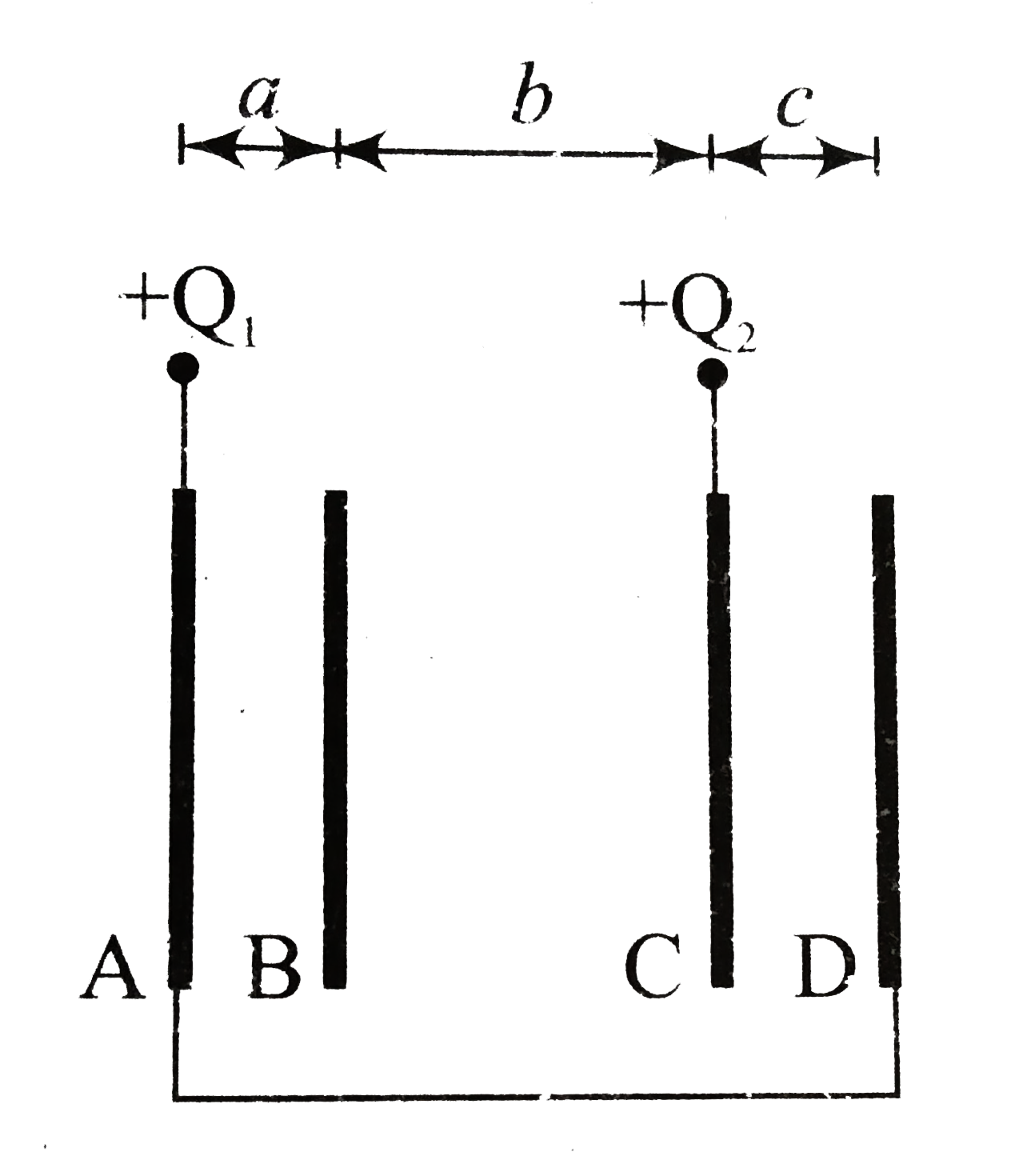
View SolutionThe figure shows four identical conducting plates each of area A the seperation between the consecutive plates is equal to L. When both the switches are closed, if charge present on the upper surface of the lowest plate from the top is written as xV0vareosilon0AL then what is the value of x? Treat symbols as having usual meaning

View Solution
Knowledge Check
Figure shows an arrangement of four identical rectangular plates A,B,C, and D each of area S. Find the charges appearing on each face (from left to right) of the plates. Ignore the separation between the plates in comparison to the plate dimensions.
 APotential difference between the plates A and B is independent of Q1.BPotential difference between plates C and D is independent of Q1CPotential difference between the plates A and B is independent of Q2.DPotential difference between plates C and D is independent of Q2
APotential difference between the plates A and B is independent of Q1.BPotential difference between plates C and D is independent of Q1CPotential difference between the plates A and B is independent of Q2.DPotential difference between plates C and D is independent of Q2Figure shows an arrangement of four identical ractangular plates A, B ,C and D each of area S. Find the charges appearing on each face (from left to right) of the plates. Ignore the separation between the plates in comparison to the plate dimensions.
 APotential difference between plastes A & B is independent of Q1BPotential difference between plastes C & D is independent of Q1CPotential difference between plastes A & B is independent of Q2DPotential difference between plastes C & D is independent of Q2
APotential difference between plastes A & B is independent of Q1BPotential difference between plastes C & D is independent of Q1CPotential difference between plastes A & B is independent of Q2DPotential difference between plastes C & D is independent of Q2
Consider the following arrangement of four parallel plates with plate area A each. The separation between each consecutive plate is d. The leftmost and rightmost plates are connected by a metal wire. Calculate the effective capacitance between points P and Q.
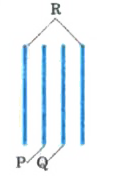
View SolutionAll the plates shown in the figure are parallel to each other, the area of each plate is A, and the separation between each pair of facing plates is d. The equivalent capacitance between points A and B is
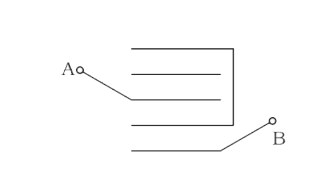
View SolutionThe figure shows a rectangular brass plate at 0∘C . in which there is cut a rectangular hole of dimensions indicated .if the temperature of the plate is raised to 150∘C , then
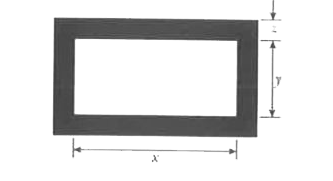
View SolutionFigure shows a parallel plate capacitor with its plate area A=lb and plate separation d at left end of the plates. Upper plate of capacitor is slightly tilted by a very small angle 8 as shown. Find the capacitance of this capacitor.
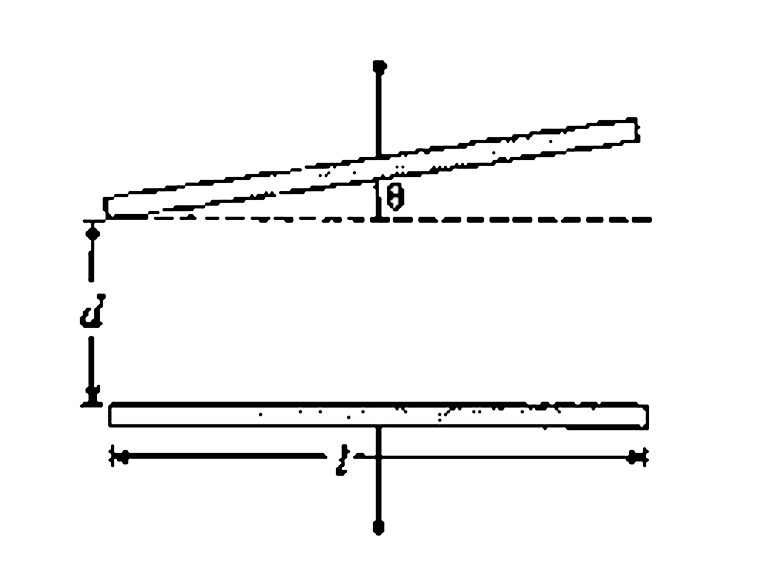
View SolutionFour large identical metallic plates are placed as shown in the Figure. Plate 2 is given a charge Q. All other plates are neutral. Now plates 1 and 4 are earthed. Area of each plate is A.
(a) Find charge appearing on right side of plate 3.
(b) Find potential difference between plates 1 and 2.
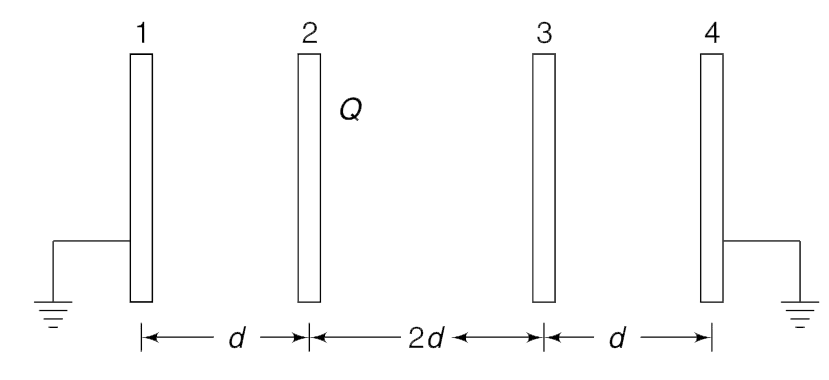
View SolutionFour large identical metallic plates are placed as shown in the Figure. Plate 2 is given a charge Q. All other plates are neutral. Now plates 1 and 4 are earthed. Area of each plate is A.
(a) Find charge appearing on right side of plate 3.
(b) Find potential difference between plates 1 and 2.

View Solution
